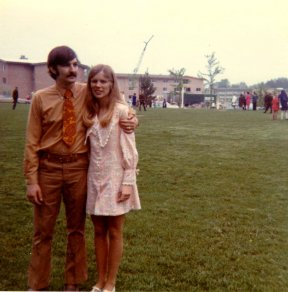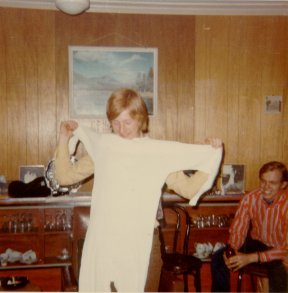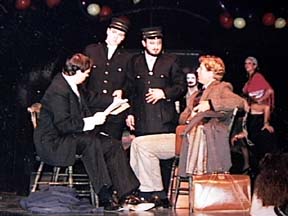Have you looked at a “cutting-edge” wedding video lately? It looks a bit like Tarantino crossed with Fellini. “My Wedding Day 1/2”.
What might be going on is the same process that happened to “art” at the end of the 19th century. For about 2000 years, the goal of painting seemed to be to replicate, as accurately as possible, the image of something. A lot of technical break-throughs, like the use of perspective, the development of different paints and mediums, were the result of artists struggling to unlock the secrets of making a painting look real. Popularly, art functioned like early photography, as record-keeping, information transmittal: here’s a portrait of the pope– in other words, this is what he looks like.
Once photography began to replace that function, artists began to change their styles, and the meaning of art changed. Van Gogh’s sunflowers don’t tell you about what sunflowers look like, but what he felt like looking at them. Monet’s famous pond got more and more abstract as he immersed himself more and more deeply into his backyard.
Professional artists had to find something new to distinguish themselves from hacks and photographers. The hacks continued to try to paint representational images, or, worse, narrative. They were regarded as uncool (like Norman Rockwell). Same with photography: now that anyone can take decent, well-lit, and auto-focused pictures, what’s cool? Out of focus, blurry, badly coloured prints. I can’t wait ’til they start selling instamatic cameras again– to professionals.
In the same way, now that almost anybody can buy a video camera and can master the basics of using a tripod, the “professionals” have to find something new to distinguish themselves from amateurs and hacks. So they imitate film journalists from war zones, and documentarists and Dogma95.
I’m not saying it can’t be used well. I would say, though, that when it is used “for effect”, when a tripod is perfectly available and appropriate, that it has gotten silly.
When a style gets carried too far, as in, arguably, modern art, it becomes ridiculous and irrelevant. The most absurd thing I saw in the last year was a wedding video that featured a wobbly camera, sepia-toned segments, dust and scratches, fast-cutting action sequences, out-of-focus zooms—– it was hilarious. All of these shots taken not in the heat of action, but in the bride’s backyard, and all the scenes were posed. They were phony. But the guy who made it thought he was a genius, and, if I remember correctly, so did the Association of Wedding Videographers which gave him a prize. Probably, so did the bride, whose friends probably took one look at it and — this is America, folks– promptly demanded that their wedding videos be out-of-focus, black and white, dirty, hairy, and wobbly. Why not just hire a drunk?
Anyone remember the sequence in “The Apprenticeship of Duddy Kravitz” where that is exactly what happens? A film-maker is hired to do a bar mitzvah. He is an alcoholic, and seriously demented. He produces a bizarre montage of scenes from the holocaust, an actual circumcision, and various other weird shots– avant garde film-making at it’s “finest”– intercut with scenes of the actual bar mitzvah. At the end, the crowd of family members sit in stunned silence. Painful seconds tick by…. until a rabbi perks up: “I thought it was edifying”. Then they all leap up and applaud, and Duddy gets all the new customers he can handle.
I happen to think that most– not all, but most– current hand-held camera work is ridiculous and annoying. It’s a bad imitation of artists who might have had a good reason for using that style at the time, but those reasons don’t exist in someone’s backyard on their wedding day. Why not just go handheld, without deliberately shaking all over? In ten years, I think it will look damn silly.
By the way, Stanley Kubrick used it for action sequences in one of the greatest films ever made “Dr. Strangelove” (1963), and rarely used it again. That puts it well ahead of “Hill St. Blues” and “MTV”.









